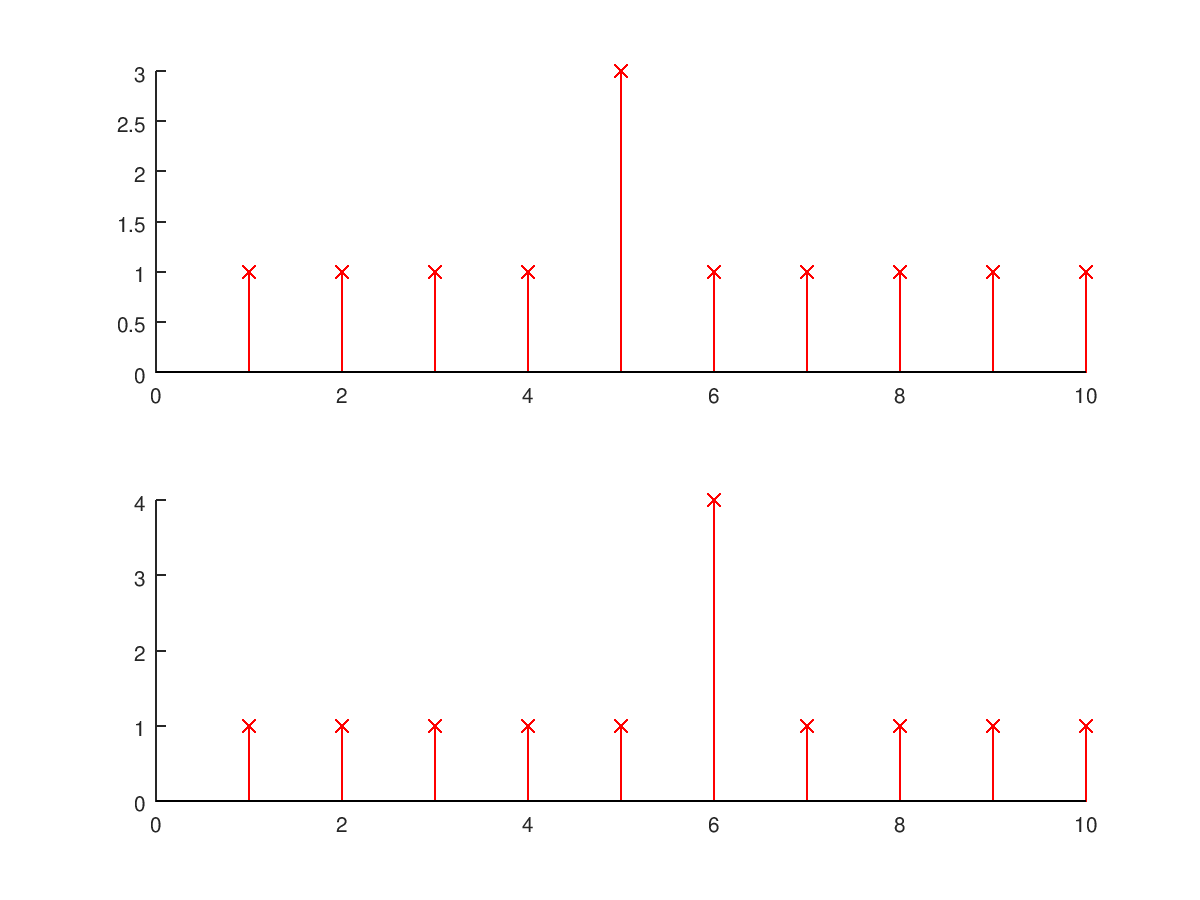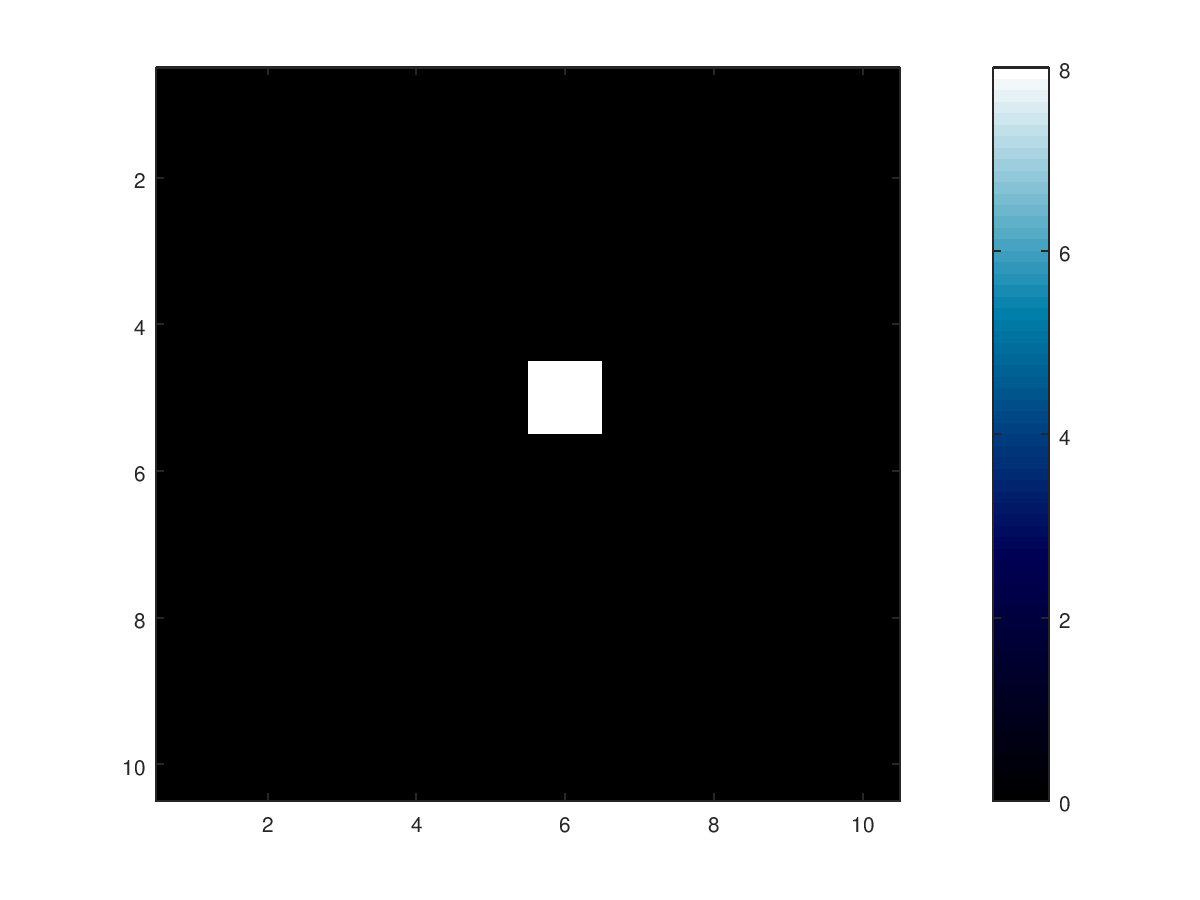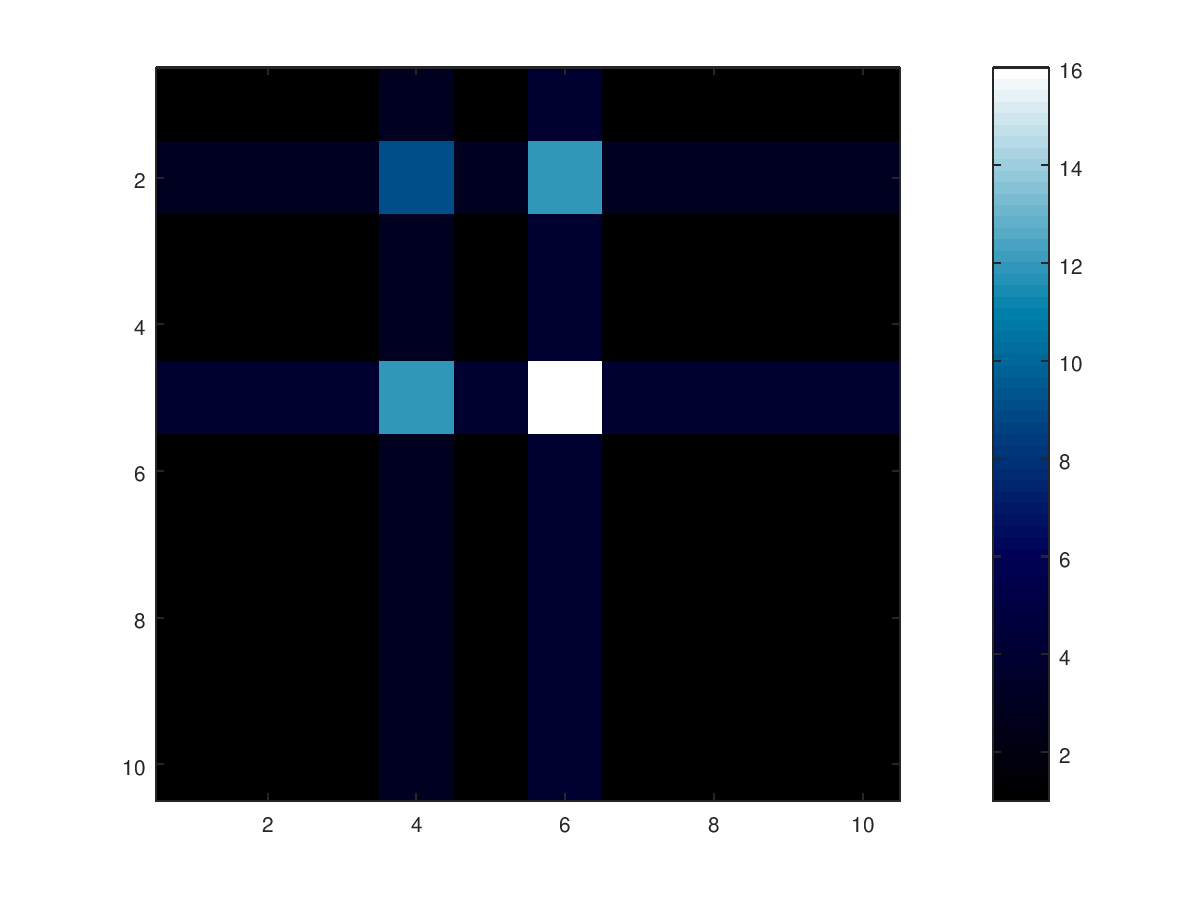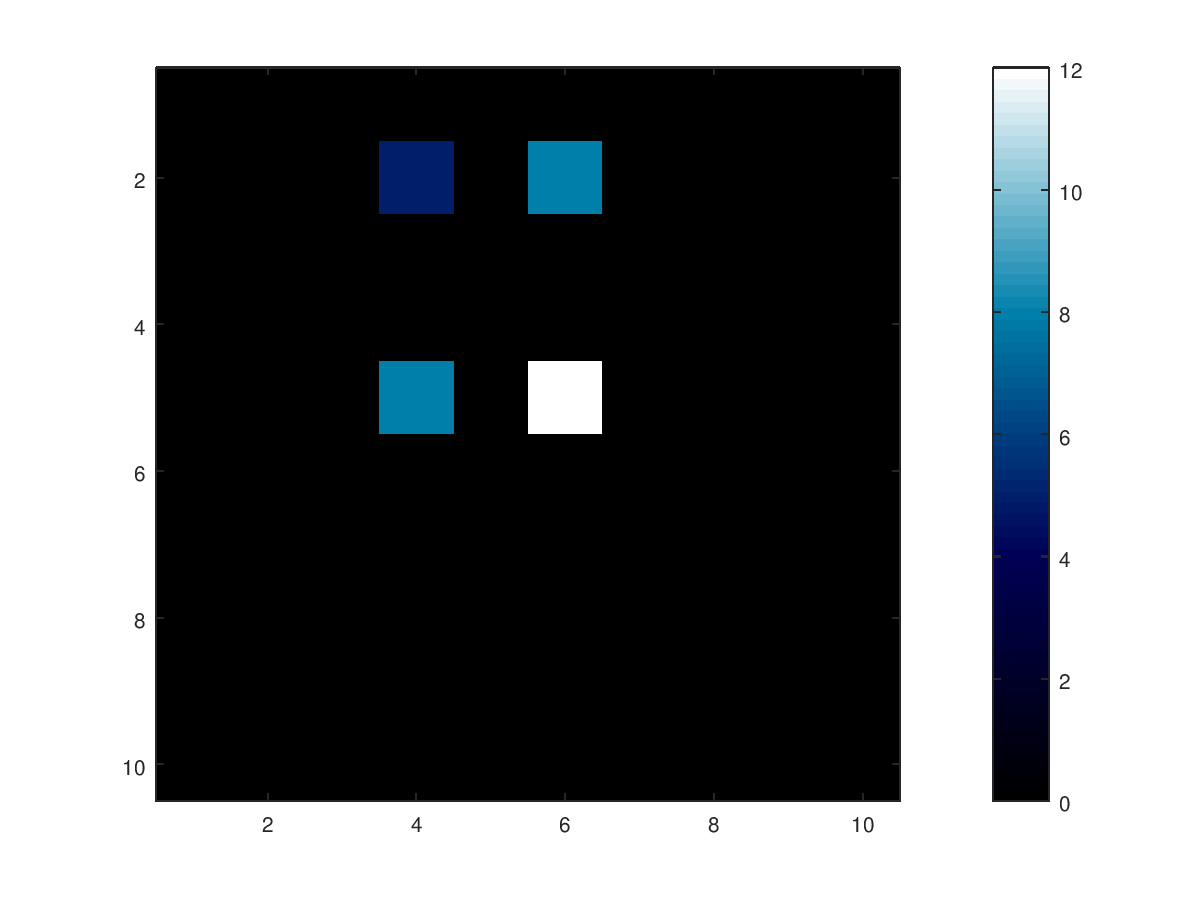In the previously post I described an simplified version of the scanning array with only two sensors.
This is, what the signals would look like if there was a single object.

Well, what's next? With these time-discrete readings of ultrasonic amplitude we can do something simillar to a time-discrete convolution to create a 2D image.

The white dot marks the object. In this simulation there is only one object, if there were more than one, artefacts will appear.
 To eliminate the artefacts, a threshold is applied.
To eliminate the artefacts, a threshold is applied.
 There is another artefact. The white dot is an area where the setup cannot detect objects due to shadowing. For now this cannot be eliminated.
There is another artefact. The white dot is an area where the setup cannot detect objects due to shadowing. For now this cannot be eliminated.Here is the octave script, I used to create the images.
%input data simulation:
clear
size = 10;
f=ones(1,size);
g=ones(1,size);
style='rx';
f(2)=3;
f(5)=4;
g(4)=3;
g(6)=4;
threshold = 4;
%plot input data
subplot(2,1,1)
stem(f,style)
subplot(2,1,2)
stem(g,style)
%create heatmap
z = zeros(size, size);
for r = 1:size
for c = 1:size
z(r,c) = f(r)*g(c)-threshold;
end
end
z(z<0)=0;
%plot heatmap
fig = figure;
colormap('ocean');
imagesc(z); %create plot
colorbar; %intensity bar
 Johannes
Johannes
Discussions
Become a Hackaday.io Member
Create an account to leave a comment. Already have an account? Log In.